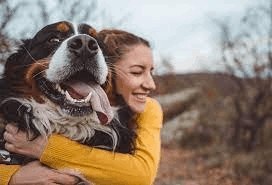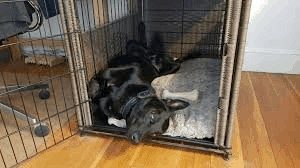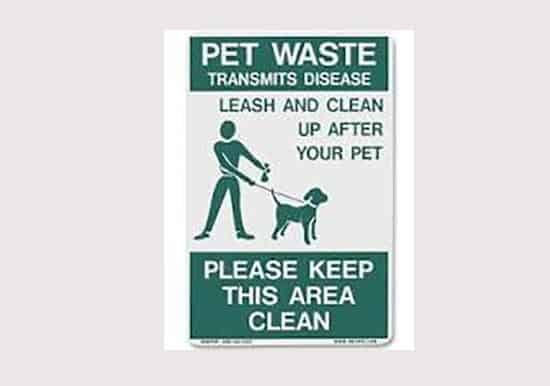So, you just got your first dog! Mazal tov! This is a very exciting time for you and your new friend. Since this is new, you’re probably wondering what to expect. The information below is designed to be a helpful guide:

You will need the following for bringing your pooch home:
- Food. It’s best to keep your dog initially on the same food it was eating. Find out so you can have this at your home. Once your friend settles in, if you think another food is better, talk with your veterinarian and slowly transition to a new food. Fast changes can cause gastro-inestinal problems.
- Learn what foods are toxic to dogs (see below) and know that people food can make dogs gain too much weight. While some dogs can be fed one meal a day, most dogs do best with two meals a day and young or small dogs may need three to four feedings.
- Food and water bowls. Steel and ceramic bowls are best, as plastic ones can harbor bacteria. Wash them regularly in hot water and dishwashing soap every day. Fresh water must be provided every day.
- Collar and leash, or harness and leash. Ideally, a collar should have enough space for you to put a couple of fingers between the collar and the dog’s neck.
Harnesses can work too but can be trickier to fit without having your pooch with you. If you want to try him/her with a harness, have someone at the shelter, vet hospital or pet store help you the first time.
Harnesses can also be designed for certain things such as taking pressure off of the neck or reducing how much your pet pulls. Knowing what type of harness you want beforehand can be helpful. For instance, flat-faced (brachycephalic) dogs such as bulldogs and pugs and those with tracheal issues should wear harnesses, not collars.
Items you will need eventually:
- ID tag. You can order these at a pet supply store or numerous online sites. Put it on the dog’s collar or harness. Another thing that can be helpful if your dog gets lost, is to have your pet microchipped. your veterinarian can do this
- Most city ordinances require a dog license. For the license, you will need to provide proof that your dog has been vaccinated for rabies. Talk to your veterinarian about this.
- All states in the U.S. require your pet to be vaccinated against Rabies. Once your dog is vaccinated, place the rabies tag on the dog’s collar or harness with the ID tag and city license.
- Keep your new friend busy with toys to entertain, lessen anxiety, and exercise the brain, including food dispensing and puzzle toys. Toys are helpful for redirecting the dog to appropriate items to chew. Don’t let new dogs play with your old shoes or they will think all shoes are toys. Walking and playing with and training your dog strengthens the bond between you.
- Find a veterinarian and have your pet’s health checked and make sure vaccinations and preventive medications such as flea and tick medications are current. Find a veterinarian that you can easily get to and that you are comfortable with. Your veterinarian can help you get familiar with the things a new owner needs to know for the area.
- If you live in heartworm country, you will need to visit the veterinarian as soon as possible for a heartworm blood test before your dog begins taking a heartworm preventive. Many people in winter climates give it year round. Heartworm preventive is significantly less expensive than heartworm treatment, and heartworms can be fatal.
- Poop bags to pick up after your dog. You can buy the kind that compost, or plain plastic.
- Shampoo made specifically for dogs, not yours. Human shampoo has a lot of acidity can create an area hospitable for bacteria and parasites. Dogs also have more oil than people do and we don’t want shampoos that remove too much oil or that have fragrances, which can irritate the skin.
- Toothbrush and toothpaste for dogs. You can use gauze instead of a toothbrush, though. Human toothpaste has fluoride and detergents that are not meant to be swallowed, but dog toothpaste can and will be swallowed.
- Toenail clippers or nail board, unless you plan to have your veterinarian or groomer trim them regularly.
Some equipment you may need, but not necessarily

- Dog beds can be a nice place for your dog to relax. Some can be placed in a corner and other inside a crate.
- Some dogs enjoy being in crates or exercise pens, thinking of them as their own den, while others don’t. Unless the dog was a stray, the people who had the dog should be able to tell you. Some dog owners think they are necessary, and some never find a need for one.
However, the time you would need it most is the very beginning of the dog’s time with you, particularly when you leave the house. Some people have their dogs sleep or eat in the crate. Many people use them to housetrain dogs because dogs don’t like sitting in their own filth. A crate also provides a safe place for your dog to stay out of trouble when you are gone.
Crate should be introduced slowly with the door open so your pet can go in and out. Furnish it with a comfy bed and your dog’s favorite toys. Cover it 3/4 of the way so it has a den-like feel but leave the front open so your dog can see out. - Baby gates to prevent your dog from going in or out of a certain room if you want to restrict where your dog goes.
- Brushes and combs depend on your dog’s needs. Dogs with long coats need to be brushed regularly, and if they are the type to blow coat (shed a large proportion of their coat within a few days as a seasonal change) you will need a brush and a detangler appropriate to your dog’s coat. Ask your veterinarian.
- Many dogs are nervous when moving to a new home…oops… and you may need some urine cleaner. The ones with enzymes work best. Oxyclens also works well!
- Training classes may be helpful for both you and your dog. These classes are meant to teach you how to train your dog, so a course for you and your dog is a good idea as long as your dog is not reactive to other dogs or people, in which case a group class may do more harm than good.
- Decide immediately if you will let the dog get on your furniture or bed. If you don’t let them start doing what you don’t want, your life will be easier.
Time for your Dog

What else does your dog need?
Mostly, your dog needs YOU. They need time with you, they need your patience, they need your affection. They do not need any anger, punishment, or yelling.
They do not speak your language but rely on your tone of voice. Most dogs are exquisitely tuned into human emotions. If they don’t behave the way you expect, it is up to you to train them to the daily rhythm of your home. Your dog’s bladder will now rule your life.
Many dogs are okay with eliminating three times a day: when they get up, dinner time, and bedtime, but that doesn’t mean every dog will only need to go out three times a day. In the beginning, your dog may be nervous and need to go more often. Very young and older dogs usually need to go more often.
Your dog needs exercise, depending on their age and physical condition. Even old, doddering dogs like to go up and down the block, but insufficient exercise for most dogs means they will burn out their energy in inappropriate ways, like chewing things they shouldn’t.
Messages are left in other dogs’ urine, and they like to go out and read it and respond. They like to move and smell, leave their scent, and see the neighborhood and the neighbors. These are called sniff walks; they are about enrichment more than exercise and are very important. Use a leash to prevent accidental tragedy; check to see if there is a leash law in your area.
Most, but not all, dogs want affection – pats on the head, belly rubs, ear scritches, sweet nothings lovingly whispered to them. A consent test can tell you if a dog likes that kind of affection or prefers not to get it. They may want to fall asleep with their head or entire body on your lap, whether they are lap sized or not.
A regular schedule is best, if it’s possible. They like to know when they’ll be fed, when you’ll get home from work, when they can nestle with you to watch a movie, and what signals bedtime. Try to give meals at approximately the same time each day, such as right when you get up, or right when you get home from work.
Some of what we can eat or ingest – xylitol ( a sugar substitute), alcohol, marijuana, grapes/raisins, caffeine, ibuprofen, some nuts – will make dogs sick. See the box below for more information on toxins.
Starting a relationship with a new dog is a bit like dating someone new. Everyone is on their best behavior for approximately three weeks to three months. Once dogs get comfortable and come to realize this is home, their real temperament will emerge. They are no longer pretending that they have to behave in front of company. Often when they are comfortable, a rich sense of humor will be seen, or a penchant for playing with you in a certain way. Whatever it is, enjoy it! But start training your dog early, before they get comfortable enough to start testing you.
Toxic Substances for Dogs
Dogs are a different species, so some things we can eat or ingest may essentially poison them. There’s no need to panic if your 120-lb dog eats two M&Ms, but you do need to worry if your 20-lb dog eats half of a chocolate cake. If you know what your dog has ingested, you can call ASPCA Poison Control Center for a fee, at (888) 426-4435, or contact a veterinarian immediately.
- Alcohol
- Caffeine
- Carpet shampoo
- Chocolate
- Cigarettes, nicotine, e-liquid for electronic cigarettes
- Citrus
- Coconut and coconut oil
- Compost
- Fabric softener sheets
- Grapes and raisins
- Ibuprofen and naproxen
- Marijuana
- Milk and dairy
- Mosquito repellant with DEET
- Nasal decongestants
- Nuts (particularly Macadamia nuts)
- Onions, garlic, chives
- Pesticides and rodenticides
- Salt and salty snack foods
- Tulips, daffodils, irises, crocuses, and others
- Xylitol
- Yeast dough


